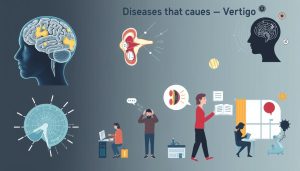Applied behavior analysis (ABA) is a common therapy for autism. But, its effectiveness is a topic of debate. Is ABA really helpful, or has it been debunked?
The debate about ABA for autism is complex. Some people say it works well, while others have doubts. This debate makes it hard for families to know what to do.
We will look closely at ABA therapy’s effectiveness. We aim to understand both sides of this important issue. Our goal is to help you make informed choices about autism treatment.
Understanding ABA Therapy: A Complete Overview
Applied behavior analysis (ABA) is key in autism treatment. It aims to enhance specific behaviors and skills through positive reinforcement. Let’s dive into its beginnings, main ideas, and how it’s traditionally used.
Origins and Development of Applied Behavior Analysis
ABA therapy started with B.F. Skinner’s work in the 1930s. His studies on operant conditioning were the foundation for ABA. In the 1960s, psychologists applied these ideas to help kids with autism, starting modern ABA therapy.
Core Principles and Methodologies
ABA therapy’s success depends on several key principles:
- Positive reinforcement
- Behavior shaping
- Task analysis
- Prompting and fading
These methods aim to boost wanted behaviors and cut down on unwanted ones. Therapists break down complex skills into smaller, easier steps. This makes learning and mastering them simpler.
Traditional Implementation in Autism Treatment
In autism treatment, ABA usually involves one-on-one sessions with a trained therapist. The goal is to improve communication, social, and life skills. Sessions can be long, often 20-40 hours a week for young kids.
| ABA Component | Description | Goal |
|---|---|---|
| Discrete Trial Training | Short, structured learning episodes | Teach specific skills |
| Natural Environment Teaching | Learning in everyday settings | Generalize skills |
| Verbal Behavior Intervention | Focus on language development | Improve communication |
While ABA has shown promising results, it’s vital to remember that each child is different. The therapy’s success can vary. Ongoing research aims to improve and refine ABA techniques for autism treatment.
Has the ABA Method for Autism Been Debunked: Examining the Evidence
The debate on Applied Behavior Analysis (ABA) therapy for autism is ongoing. Some say it works well, while others have doubts. Let’s look at the evidence and both sides of the argument.
ABA therapy is seen as a proven method for autism. Studies show it improves communication, social skills, and daily life abilities. But, there’s growing criticism about its methods.

Critics say ABA can be too strict and doesn’t meet each person’s needs. They worry it focuses too much on changing behavior without thinking about feelings. This has led to calls for more personalized autism treatments.
It’s important to debunk myths about ABA therapy. One myth is that it tries to “cure” autism. Actually, it aims to help people develop skills and manage tough behaviors. Knowing this helps us judge it fairly.
| Aspect | Supportive Evidence | Critical Perspectives |
|---|---|---|
| Effectiveness | Improved communication and social skills | Concerns about long-term psychological impact |
| Methodology | Structured and measurable approach | Potential for overly rigid implementation |
| Personalization | Tailored programs for individual needs | Risk of overlooking unique autistic traits |
Even though the debate goes on, ABA therapy hasn’t been completely discredited. It’s changing because of feedback and new studies. The goal is to find a balance between proven methods and respecting each person’s needs.
The Scientific Foundation Behind ABA Therapy
ABA therapy is backed by strong science. It’s a proven method for helping those with autism. Let’s look at the research that supports its benefits.
Research-Based Support for ABA
Many studies have shown ABA’s positive effects. It helps with communication, social skills, and daily tasks. This makes ABA a top choice for autism treatment.
Measurable Outcomes and Success Rates
ABA therapy’s success is clear. It leads to real improvements in:
- Language development
- Less problem behaviors
- More independence in daily life
- Better social skills
Peer-Reviewed Studies and Their Findings
Peer-reviewed research always backs ABA. A detailed look at studies shows:
| Study Focus | Participants | Key Findings |
|---|---|---|
| Early Intervention | Children aged 2-5 | 48% achieved typical functioning |
| Behavioral Improvement | Adolescents 12-17 | 67% reduction in problem behaviors |
| Long-term Outcomes | Adults 18+ | 82% maintained skills 5 years post-therapy |
These findings show ABA’s success across different ages and skills. It’s a leading treatment for autism.
Common Criticisms of ABA Therapy
ABA therapy has faced a lot of criticism over the years. Many in the autism community have raised concerns about its methods and long-term effects. This has led to a big debate about autism treatment.

One big issue is the amount of time spent in ABA programs. Critics say 40 hours a week is too much for young kids. They think it might take away important playtime and social experiences.
Another concern is the focus on changing behaviors. Some say ABA tries to make autistic individuals act like everyone else. This could mean hiding their true selves and how they feel.
- Overemphasis on compliance
- Potential for increased anxiety and stress
- Lack of focus on emotional well-being
People who used to get ABA have shared their stories. They talk about feeling forced to hide their autism, leading to burnout and mental health problems. These stories have made the debate even more heated.
Even with all the criticism, many families and professionals support ABA. They believe it can be helpful when done right and with respect for each person. They see it as a way to help with skills and independence.
Modern Adaptations and Evolution of ABA Methods
Applied behavior analysis has grown a lot in treating autism. Today, ABA therapy is more effective thanks to new improvements. Let’s see how this field has changed to help more people with autism.
Contemporary Approaches to ABA
Now, ABA uses naturalistic teaching methods. These methods teach skills in daily activities, making learning more meaningful. For instance, language skills are taught during play or meals, not just at desks.
Integration with Other Therapies
ABA works well with other treatments now. This teamwork makes autism treatment better. Speech, occupational therapy, and social skills groups often join ABA programs, making treatment more complete.
Technological Advancements in ABA
Technology has changed ABA a lot. Digital tools help track progress and even deliver therapy. Virtual reality and apps make learning fun and engaging, helping people learn faster.
| ABA Aspect | Traditional Approach | Modern Adaptation |
|---|---|---|
| Teaching Method | Discrete Trial Training | Naturalistic Teaching Strategies |
| Therapy Setting | Clinic-based | Home and Community-based |
| Data Collection | Paper-based | Digital and Real-time |
| Parent Involvement | Limited | Extensive Training and Participation |
These changes have made ABA therapy much better. By using new methods and technology, ABA keeps getting better. It now offers more personalized and fun ways to treat autism.
The Role of Ethics in ABA Implementation
Ethics are key in applied behavior analysis, mainly when treating autism. The debate often focuses on aba ethical concerns. This shows the importance of responsible practices. Therapists must always put the client’s well-being first while aiming for therapeutic goals.

Getting consent is a big part of ethical ABA. Therapists need to get consent from clients or their guardians before starting. They must explain the therapy’s goals, methods, and risks clearly. It’s also vital to respect the autonomy of autistic individuals, letting them have a say in their treatment.
It’s important to balance therapy goals with individual needs. ABA practitioners should make their approach fit each person’s unique traits and preferences. This way, therapy can support growth without causing stress or discomfort.
- Prioritize client well-being
- Obtain informed consent
- Respect autonomy
- Tailor treatment plans
As ABA evolves, so do its ethical guidelines. Professional groups regularly update their codes to address new concerns. By following these ethical principles, ABA therapists can offer effective treatment while respecting the dignity and rights of autistic individuals.
Comparing ABA to Alternative Autism Interventions
The debate on autism treatment is ongoing. Parents and experts are looking into different ways to help. Applied Behavior Analysis (ABA) is well-known, but other methods have their own strengths. Let’s look at how ABA alternative therapies fit into autism care.
Developmental Approaches
Developmental methods aim to improve social and emotional skills through play. They differ from ABA’s strict structure. The DIR/Floortime model, for instance, lets parents interact with their child at their own pace.
Occupational Therapy
Occupational therapy helps kids with autism learn daily skills and handle sensory issues. It works alongside ABA to tackle physical and mental barriers to learning and self-sufficiency.
Speech and Language Interventions
These therapies focus on overcoming communication hurdles in autism. They might use visual tools, sign language, or tech to boost talking and non-verbal skills. While ABA can include language goals, speech therapy offers specialized help.
| Intervention | Focus | Approach |
|---|---|---|
| ABA | Behavior modification | Structured, repetitive |
| Developmental | Social-emotional growth | Child-led, play-based |
| Occupational Therapy | Daily living skills | Practical, sensory-focused |
| Speech Therapy | Communication | Language-centered, adaptive |
Each autism treatment has its own advantages. Many families choose to mix different methods for a well-rounded support plan for their child.
Parent and Advocate Perspectives on ABA

ABA therapy has sparked heated debates in the autism community. Parents and advocates have different views on its effectiveness and ethics. Some see it as life-changing, while others worry about its harm.
Supporters of ABA say it improves communication and reduces challenging behaviors. They point to scientific evidence and personal success stories. Many parents see big improvements in their children’s social skills and daily life.
Critics, on the other hand, are concerned about the controversy surrounding ABA. They fear it tries to “normalize” autistic behaviors and may cause emotional distress. Some argue ABA doesn’t address autism’s root causes and might suppress natural traits.
| Perspective | Pro-ABA | ABA Criticism |
|---|---|---|
| Behavioral Changes | Positive improvements | Masking, not addressing core issues |
| Emotional Impact | Increased confidence | Potential trauma |
| Long-term Effects | Better life outcomes | Concerns about authenticity |
The debate shows we need tailored support for autism. Both sides agree on the importance of respecting autistic individuals’ rights and well-being.
Professional Insights: What Experts Say About ABA
The debate on applied behavior analysis (ABA) therapy effectiveness is ongoing. Experts from different fields share their views on ABA’s role in treating autism. This helps us understand ABA better.
Clinical Psychologist Views
Many clinical psychologists see ABA as a valuable tool for autism treatment. They like its structured approach and focus on skill development. They also stress the importance of making ABA programs fit each child’s needs.
Behavioral Analyst Perspectives
Behavioral analysts often talk about ABA’s evidence-based nature. They say it can target specific behaviors and lead to positive changes. Some suggest combining ABA with other therapies for a complete treatment plan.
Research Community Stance
The research community has mixed views on ABA therapy effectiveness. Many studies show its benefits, but some call for more long-term research. They want to understand ABA’s long-term effects on autistic individuals.
As the debate on autism treatment continues, professionals keep improving ABA methods. They aim to address concerns and enhance outcomes for those on the autism spectrum. This ongoing discussion shapes ABA’s future in autism treatment.
The Impact of Early Intervention Using ABA
Early use of Applied Behavior Analysis (ABA) in autism treatment shows great promise. Studies show that starting ABA therapy early can greatly improve communication, social skills, and daily habits. Experts agree that starting early is key for the best results in autism treatment.
Research highlights the benefits of ABA therapy in early years. Kids who start ABA before age five often see big gains in language, thinking, and daily skills. These gains can greatly improve their life and independence as they get older.
ABA therapy is most effective when it’s tailored to each child’s needs. Early assessments help therapists focus on specific challenges and strengths. This approach helps kids develop important skills for school and social life.
- Improved communication skills
- Enhanced social interactions
- Better adaptive behaviors
- Increased independence in daily activities
While ABA can help at any age, starting early is best. Early intervention gives kids with autism the best chance to succeed. As research on autism treatment grows, early ABA remains a key part of effective care.
Addressing Misconceptions About ABA Therapy
Many people criticize ABA therapy because of misunderstandings. It’s important to clear up these myths to truly understand applied behavior analysis. Let’s look at some common misconceptions and correct them.
Some think ABA tries to change a person’s core identity. But, it actually aims to teach useful skills and reduce bad behaviors. Its main goal is to enhance life quality, not change who someone is.
Another myth is that ABA uses punishment. But, today’s ABA focuses on positive rewards. Therapists give rewards for good behaviors to encourage them.
Some believe ABA is only for young kids with autism. But, ABA can help people of all ages and with different conditions, not just autism.
| Myth | Reality |
|---|---|
| ABA changes a person’s identity | ABA develops skills and reduces challenging behaviors |
| ABA uses punishment | Modern ABA focuses on positive reinforcement |
| ABA is only for young autistic children | ABA benefits all ages and various conditions |
By tackling these myths, we can see the real value and benefits of ABA in treating autism.
Quality Standards and Best Practices in ABA
Applied behavior analysis (ABA) is a key part of treating autism. To make sure ABA works well, strict standards and best practices are needed. These rules help professionals give the best care and track how well it works.
Certification Requirements
ABA experts must pass tough certification tests. The Behavior Analyst Certification Board (BACB) sets these rules. They get deep training and education in ABA.
| Certification Level | Education | Supervised Experience | Exam |
|---|---|---|---|
| Board Certified Behavior Analyst (BCBA) | Master’s degree | 1500-2000 hours | Required |
| Board Certified Assistant Behavior Analyst (BCaBA) | Bachelor’s degree | 1000 hours | Required |
| Registered Behavior Technician (RBT) | High school diploma | 40 hours training | Required |
Treatment Planning
Good ABA starts with a custom plan. Therapists look at each child’s needs and set goals. These plans focus on skills and behaviors important for growth.

Progress Monitoring Methods
Keeping track of progress is vital in ABA. Therapists use data to see how well things are going. This data helps change the treatment for better results. Regular checks make sure the therapy stays on track with the child’s needs.
The Future of ABA Therapy
Applied behavior analysis (ABA) is growing as a major part of autism treatment. As the debate on autism treatment goes on, experts are looking into new ways to make ABA better.
Technology is becoming a big part of ABA therapy. Virtual reality and artificial intelligence are being used to make treatments more fun and personal. These tools help gather and analyze data better, leading to more effective treatment plans.
There’s also a push to improve social skills. New ABA methods are being developed to help with complex social interactions. This aims to help people with autism deal better with social situations in everyday life.
Autism treatments are moving towards a more complete approach. Future ABA programs might include parts of other therapies, like occupational and speech therapy. This could offer a more all-around treatment experience.
- Increased emphasis on self-advocacy skills
- Development of ABA strategies for adults with autism
- Greater focus on emotional regulation and mental health
As research continues, ABA therapy’s future looks bright. By tackling current issues and using new scientific discoveries, ABA will keep being a key support for people with autism throughout their lives.
Making Informed Decisions About ABA Treatment
Choosing the right autism treatment is key. When looking at ABA therapy, it’s vital to weigh its effectiveness and ethics. This guide aims to help you decide on ABA therapy wisely.
Evaluation Criteria
When checking ABA therapy’s worth, seek programs that:
- Use individualized treatment plans
- Focus on functional skills and positive behaviors
- Involve parents and caregivers in the process
- Regularly measure and report progress
Questions to Ask Providers
Before starting ABA therapy, ask providers:
- What are your qualifications and experience?
- How do you address aba ethical concerns?
- What specific techniques will you use?
- How do you measure progress?
Red Flags to Watch For
Be wary of ABA providers who:
- Promise quick fixes or unrealistic outcomes
- Use punishment-based techniques
- Disregard the child’s emotional well-being
- Refuse to collaborate with other autism treatment professionals
By considering these points, you can make a smart choice about ABA therapy for your child with autism.
Resources and Support for Families Considering ABA
Families looking into applied behavior analysis (ABA) for autism treatment have many resources. The Autism Society of America provides detailed info on ABA and other therapies. They offer webinars, local support groups, and a helpline for personal advice.
The Association for Science in Autism Treatment (ASAT) is also a great resource. They give an in-depth look at ABA and its benefits. ASAT’s site has research summaries and expert interviews on autism treatments.
For those interested in ABA alternatives, the Autism Research Institute has info on dietary approaches and more. They host online forums for parents to share and connect. Remember, every child is different, so what works for one might not work for another.
Local autism support centers offer workshops and one-on-one consultations. They help families understand treatment options. These centers can connect you with experienced ABA providers and other autism specialists. They may also provide financial aid info for those worried about costs.
FAQ
Q: Has ABA therapy for autism been scientifically debunked?
A: No, ABA therapy has not been debunked by science. Critics and debates exist, but many studies support its benefits. The therapy has evolved to address some concerns.
Q: What are the core principles of Applied Behavior Analysis (ABA)?
A: ABA’s core principles include positive reinforcement and breaking down skills into small steps. It focuses on changing behavior through observation and intervention.
Q: Are there ethical concerns surrounding ABA therapy?
A: Yes, ethical concerns about ABA therapy include consent and respect for autistic individuals. Modern ABA aims to address these by focusing on the individual’s well-being and goals.
Q: How has ABA therapy evolved in recent years?
A: ABA therapy now uses naturalistic approaches and focuses on communication. It also integrates with other therapies and uses technology to improve treatment.
Q: What are some alternatives to ABA therapy for autism treatment?
A: Alternatives include DIR/Floortime, occupational therapy, and speech interventions. Some families choose a mix of therapies based on their child’s needs.
Q: Is ABA therapy effective for all individuals with autism?
A: ABA therapy works differently for everyone with autism. Its success depends on the individual’s age, needs, and how it’s applied. Some see big improvements, while others may not respond as well.
Q: What should parents consider when deciding on ABA therapy?
A: Parents should look at the provider’s qualifications and the therapy’s fit with their child’s needs. They should also consider the focus on functional skills and ethical practices. Monitoring progress and adjusting the approach if needed is key.
Q: How important is early intervention with ABA therapy?
A: Early ABA therapy is often seen as key for the best results. Starting young can lead to better communication and social skills. But, ABA can also help when started later.
Q: Are there quality standards for ABA therapy providers?
A: Yes, quality standards exist for ABA providers. The Behavior Analyst Certification Board sets certification requirements. Good programs follow ethical guidelines and use proven practices.
Q: How can families find reputable resources about ABA therapy?
A: Families can find reliable info through organizations like the Autism Society of America and Autism Speaks. Local support groups, healthcare providers, and schools can also offer guidance on ABA therapy.


















